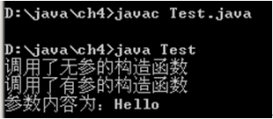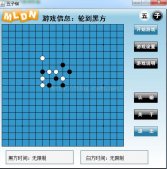Redis是一个缓存消息中间件及具有丰富特性的键值存储系统。Spring Boot为Jedis客户端库和由Spring Data Redis提供的基于Jedis客户端的抽象提供自动配置。spring-boot-starter-redis'Starter POM'为收集依赖提供一种便利的方式。
引入spring-boot-starter-redis,在pom.xml配置文件中增加配置如下(基于之前章节“Spring Boot 构建框架”中的pom.xml文件):
|
1
2
3
4
|
<dependency> <groupId>org.springframework.boot</groupId> <artifactId>spring-boot-starter-redis</artifactId> </dependency> |
可以注入一个自动配置的RedisConnectionFactory,StringRedisTemplate或普通的跟其他Spring Bean相同的RedisTemplate实例。默认情况下,这个实例将尝试使用localhost:6379连接Redis服务器。
|
1
2
3
4
5
6
7
8
9
10
|
@Componentpublic class MyBean { private StringRedisTemplate template; @Autowired public MyBean(StringRedisTemplate template) { this.template = template; } // ...} |
如果添加一个自己的任何自动配置类型的@Bean,它将替换默认的(除了RedisTemplate的情况,它是根据bean的名称'redisTemplate'而不是它的类型进行排除的)。如果在classpath路径下存在commons-pool2,默认会获得一个连接池工厂。
应用使用Redis案例
添加配置文件,配置内容如下:
|
1
2
3
4
5
6
7
|
# REDIS (RedisProperties)# Redis服务器地址spring.redis.host=192.168.0.58# Redis服务器连接端口spring.redis.port=6379# 连接超时时间(毫秒)spring.redis.timeout=0 |
redis配置类,具体代码如下:
|
1
2
3
4
5
6
7
8
9
10
11
12
13
14
15
16
17
18
19
20
21
22
23
24
25
26
27
28
29
30
31
32
33
34
35
36
37
38
39
40
41
42
43
44
45
|
import org.springframework.boot.context.properties.ConfigurationProperties; import org.springframework.stereotype.Component; @Component@ConfigurationProperties(prefix = "spring.redis") public class RedisConn { private String host; private int port; private int timeout; public String getHost() { return host; } public void setHost(String host) { this.host = host; } public int getPort() { return port; } public void setPort(int port) { this.port = port; } public int getTimeout() { return timeout; } public void setTimeout(int timeout) { this.timeout = timeout; } @Override public String toString() { return "Redis [localhost=" + host + ", port=" + port + ", timeout=" + timeout + "]"; } } |
注意:在RedisConn类中注解@ConfigurationProperties(prefix = "spring.Redis")的作用是读取springboot的默认配置文件信息中以spring.redis开头的信息。
配置cache类
|
1
2
3
4
5
6
7
8
9
10
11
12
13
14
15
16
17
18
19
20
21
22
23
24
25
26
27
28
29
30
31
32
33
34
35
36
37
38
39
40
41
42
43
44
45
46
47
48
49
50
51
52
53
54
55
56
57
58
59
60
61
62
63
64
65
66
67
68
69
70
71
72
73
74
75
76
77
78
79
80
81
82
83
84
85
86
87
88
89
90
91
92
93
94
95
96
97
98
99
100
101
102
103
104
105
106
107
108
109
110
111
112
113
114
115
116
117
118
119
|
import java.lang.reflect.Method; import java.util.HashMap; import java.util.Map; import org.springframework.beans.factory.annotation.Autowired; import org.springframework.beans.factory.annotation.Value; import org.springframework.cache.CacheManager; import org.springframework.cache.annotation.CachingConfigurerSupport; import org.springframework.cache.annotation.EnableCaching; import org.springframework.cache.interceptor.KeyGenerator; import org.springframework.context.annotation.Bean; import org.springframework.context.annotation.ComponentScan; import org.springframework.context.annotation.Configuration; import org.springframework.context.annotation.PropertySource; import org.springframework.data.redis.cache.RedisCacheManager; import org.springframework.data.redis.connection.RedisConnectionFactory; import org.springframework.data.redis.connection.jedis.JedisConnectionFactory; import org.springframework.data.redis.core.RedisTemplate; import org.springframework.data.redis.core.StringRedisTemplate; import org.springframework.data.redis.serializer.Jackson2JsonRedisSerializer; import org.springframework.stereotype.Component; import com.cachemodle.RedisConn; import com.fasterxml.jackson.annotation.JsonAutoDetect; import com.fasterxml.jackson.annotation.PropertyAccessor; import com.fasterxml.jackson.databind.ObjectMapper; /** * * @author sandsa redis cache service * */ @Configuration@EnableCachingpublic class RedisConfig extends CachingConfigurerSupport { @Autowired private RedisConn redisConn; /** * 生产key的策略 * * @return */ @Bean @Override public KeyGenerator keyGenerator() { return new KeyGenerator() { @Override public Object generate(Object target, Method method, Object... params) { StringBuilder sb = new StringBuilder(); sb.append(target.getClass().getName()); sb.append(method.getName()); for (Object obj : params) { sb.append(obj.toString()); } return sb.toString(); } }; } /** * 管理缓存 * * @param redisTemplate * @return */ @SuppressWarnings("rawtypes") @Bean public CacheManager CacheManager(RedisTemplate redisTemplate) { RedisCacheManager rcm = new RedisCacheManager(redisTemplate); // 设置cache过期时间,时间单位是秒 rcm.setDefaultExpiration(60); Map<String, Long> map = new HashMap<String, Long>(); map.put("test", 60L); rcm.setExpires(map); return rcm; } /** * redis 数据库连接池 * @return */ @Bean public JedisConnectionFactory redisConnectionFactory() { JedisConnectionFactory factory = new JedisConnectionFactory(); factory.setHostName(redisConn.getHost()); factory.setPort(redisConn.getPort()); factory.setTimeout(redisConn.getTimeout()); // 设置连接超时时间 return factory; } /** * redisTemplate配置 * * @param factory * @return */ @SuppressWarnings({ "rawtypes", "unchecked" }) @Bean public RedisTemplate<String, String> redisTemplate(RedisConnectionFactory factory) { StringRedisTemplate template = new StringRedisTemplate(factory); Jackson2JsonRedisSerializer jackson2JsonRedisSerializer = new Jackson2JsonRedisSerializer(Object.class); ObjectMapper om = new ObjectMapper(); om.setVisibility(PropertyAccessor.ALL, JsonAutoDetect.Visibility.ANY); om.enableDefaultTyping(ObjectMapper.DefaultTyping.NON_FINAL); jackson2JsonRedisSerializer.setObjectMapper(om); template.setValueSerializer(jackson2JsonRedisSerializer); template.afterPropertiesSet(); return template; } } |
分析:缓存类继承的是CachingConfigurerSupport,它把读取的配置文件信息的RedisConn类对象注入到这个类中。在这个类中keyGenerator()方法是key的生成策略,CacheManager()方法是缓存管理策略,redisConnectionFactory()是redis连接,redisTemplate()方法是redisTemplate配置信息,配置后使redis中能存储Java对象。
测试配置是否成功,实例:
|
1
2
3
4
5
6
7
8
9
10
11
12
13
14
|
@RunWith(SpringJUnit4ClassRunner.class)@SpringApplicationConfiguration(Application.class)public class TestRedis { @Autowired private StringRedisTemplate stringRedisTemplate; // 处理字符串 @Autowired private RedisTemplate redisTemplate; // 处理对象 @Test public void test() throws Exception { stringRedisTemplate.opsForValue().set("yoodb", "123"); Assert.assertEquals("123", stringRedisTemplate.opsForValue().get("yoodb")); }} |
简单封装的Redis工具类,代码如下:
|
1
2
3
4
5
6
7
8
9
10
11
12
13
14
15
16
17
18
19
20
21
22
23
24
25
26
27
28
29
30
31
32
33
34
35
36
37
38
39
40
41
42
43
44
45
46
47
48
49
50
51
52
53
54
55
56
57
58
59
60
61
62
63
64
65
66
67
68
69
70
71
72
73
74
75
76
77
78
79
80
81
82
83
84
85
86
87
88
89
90
91
92
93
94
95
96
97
98
99
100
101
102
103
104
105
106
107
108
109
110
111
112
113
114
115
116
117
118
|
import java.io.Serializable; import java.util.Set; import java.util.concurrent.TimeUnit; import org.springframework.beans.factory.annotation.Autowired; import org.springframework.data.redis.core.RedisTemplate; import org.springframework.data.redis.core.ValueOperations; import org.springframework.stereotype.Component; @Componentpublic class RedisUtils { @SuppressWarnings("rawtypes") @Autowired private RedisTemplate redisTemplate; /** * 批量删除对应的value * * @param keys */ public void remove(final String... keys) { for (String key : keys) { remove(key); } } /** * 批量删除key * * @param pattern */ @SuppressWarnings("unchecked") public void removePattern(final String pattern) { Set<Serializable> keys = redisTemplate.keys(pattern); if (keys.size() > 0) redisTemplate.delete(keys); } /** * 删除对应的value * * @param key */ @SuppressWarnings("unchecked") public void remove(final String key) { if (exists(key)) { redisTemplate.delete(key); } } /** * 判断缓存中是否有对应的value * * @param key * @return */ @SuppressWarnings("unchecked") public boolean exists(final String key) { return redisTemplate.hasKey(key); } /** * 读取缓存 * * @param key * @return */ @SuppressWarnings("unchecked") public Object get(final String key) { Object result = null; ValueOperations<Serializable, Object> operations = redisTemplate.opsForValue(); result = operations.get(key); return result; } /** * 写入缓存 * * @param key * @param value * @return */ @SuppressWarnings("unchecked") public boolean set(final String key, Object value) { boolean result = false; try { ValueOperations<Serializable, Object> operations = redisTemplate.opsForValue(); operations.set(key, value); result = true; } catch (Exception e) { e.printStackTrace(); } return result; } /** * 写入缓存 * * @param key * @param value * @return */ @SuppressWarnings("unchecked") public boolean set(final String key, Object value, Long expireTime) { boolean result = false; try { ValueOperations<Serializable, Object> operations = redisTemplate.opsForValue(); operations.set(key, value); redisTemplate.expire(key, expireTime, TimeUnit.SECONDS); result = true; } catch (Exception e) { e.printStackTrace(); } return result; } } |
查询数据库时自动使用缓存,根据方法生成缓存,参考代码如下:
|
1
2
3
4
5
6
7
8
|
@Servicepublic class UserService { @Cacheable(value = "redis-key") public UserInfo getUserInfo(Long id, String sex, int age, String name) { System.out.println("无缓存时调用----数据库查询"); return new UserInfo(id, sex, age, name); }} |
注意:value的值就是缓存到redis中的key,此key是需要自己在进行增加缓存信息时定义的key,用于标识唯一性的。
Session 共享
分布式系统中session共享有很多不错的解决方案,其中托管到缓存中是比较常见的方案之一,下面利用Session-spring-session-data-redis实现session共享。
引入依赖,在pom.xml配置文件中增加如下内容:
|
1
2
3
4
|
<dependency> <groupId>org.springframework.session</groupId> <artifactId>spring-session-data-redis</artifactId></dependency> |
Session配置,具体代码如下:
|
1
2
3
4
|
@Configuration@EnableRedisHttpSession(maxInactiveIntervalInSeconds = 86400*30)public class SessionConfig {} |
maxInactiveIntervalInSeconds: 设置Session失效时间,使用Redis Session之后,原Spring Boot的server.session.timeout属性不再生效。
测试实例,具体代码如下:
|
1
2
3
4
5
6
7
8
9
|
@RequestMapping("uid")String uid(HttpSession session) {UUID uid = (UUID) session.getAttribute("uid");if (uid == null) {uid = UUID.randomUUID();}session.setAttribute("uid", uid);return session.getId();} |
登录redis服务端,输入命令keys 'session*',查看缓存是否成功。
以上就是本文的全部内容,希望对大家的学习有所帮助,也希望大家多多支持服务器之家。
原文链接:https://blog.yoodb.com/yoodb/article/detail/1421














